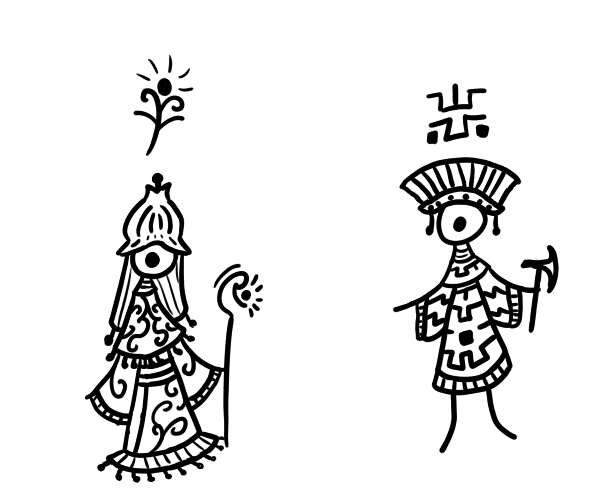Uzhilli
Uzhilli
Overview
The Uzhilli are the natives of Soranna, once having a large series of kingdoms that spanned from the Waisari river all the way down to the Aje (Odai) river. They are one of the most influential groups on the continent in history, contributing greatly to the modern Soranni - although in the modern day they are reduced to a few duchies in the far east beyond their original homeland. Today they are largely found in the duchy of Vilotinne and the Kingdom of Immestrai.Name
The name Uzhilli comes from the Ingharan exonym meaning "Radiant." The modern archaic cognate is Uszinno, meaning lights. This name is a modern invention, being used specifically to refer to the Uzhilli princess from the Ingharan epic "Tale of Four Princes." The Ingharans had formerly called the people a word that developed into modern imperial as Tiskiruli and Tiskuri - meaning those who speak crooked or wrong. Their native name was something along the lines of Ravene - land of the people. The heartlands of the people were known as Trosne - or land of towers. By the end, the last realm of the Uzhilli was known as Viltne, which became Vilotinne - land of flower blooms.History
The Uzhilli were in southern Soranna since before recorded history, although it is likely that they are not the true natives - due to the presence of ruins ancient to even them. It is likely however, that the Uzhilli are the first natives to live in the area since the Niranni conquered the Marin of the region before even the Ingharan dynasties. They would inhabit the region and develop prior to the arrival of a new group of Niranni from the north, who would conquer and assimilate the Uzhilli ever since the days of Usorring.Culture
The Uzhilli can be divided into many subgroups depending on the place of origin. The Skaras from Sikas (Skasne), the Mneveras from the Waisari region (Mnevne), the Fteras from the Meatri region (Ftene), the Nsevras from the Soranna city region (Nsevne). Later, many of these groups would consolidate into the Viltras of Vilotinne as the Ingharan conquests assimilated many, but each subgroup survived in the Vilotinne region - bar the Skaras who still live on Sikas.Architecture
The Uzhilli were well known stonemasons and architects, building vast arrays of cisterns and aquaducts as water was important to their religion along with the earth.Towers
One of the most unique and common pieces of architecture of the Uzhilli is a mound-like tower known as a Rva. The Rva has a wide base and a thinner top, with it being used primarily as a storage site or watchtower by the Uzhilli. Rva were often made of stones or mud bricks and were found almost always on hilltops or mountaintops.Shrines and Religious Sites
Typically, Uzhilli religious sites were open air, and held basins of water surrounded by earth. It is believed that the relationship between the two was holy, and often rain saw worship as being rained on was considered a sign of good luck.Cities
Uzhilli cities were often built on rivers or lakes, and were most commonly made of mud bricks and stone. The main palace was often a temple and government building, a center of the state and religion that saw people invited in for rituals. The layout was usually in a geometric pattern, with squared wavy structures being highly prized.Animal Relations
The Uzhilli have a strong relationship with the native Mibaen, a water-bison like animal that helps plow the fields. Their horns are used to craft decor and their skins are used in a variety of products that find their way all over the household. It has been domesticated by the Uzhilli since time immemorial. They are associated with the god Sbara.A popular symbol of the people was that of a creature known as the Lruk, a caprinid with large flattened horns that it uses like a shovel to construct dens to hide from the hot summer sun. It is associated with Nepnu due to its relationship to the earth, and is sometimes called the mole-goat. It is a wild species similar to an ibex, albeit with its strange horns.
A final animal popular among the Uzhilli is that of the rare Kaplu, a semi-aquatic mammal known for piling rocks in mounds in the middle of ponds that it uses as nests. It has webbed, but dexterous grippers that it uses to hoist the rocks; it has a long flat tail to help it swim, a long snout to help it dig in the muck and detect prey; long teeth to help it eat vegetables and bamboo trees, a crest of hair on its head to attract mates, and waterproof fur. They typically live in groups of 3-6, and are about 1.5x the size of a beaver. They are said to be related to beavers, filling a similar niche but are more omnivorous.




Comments